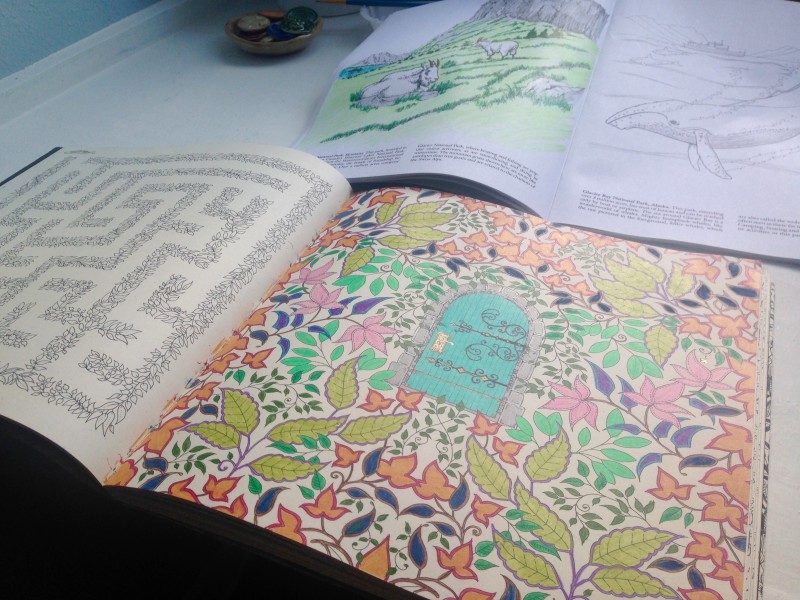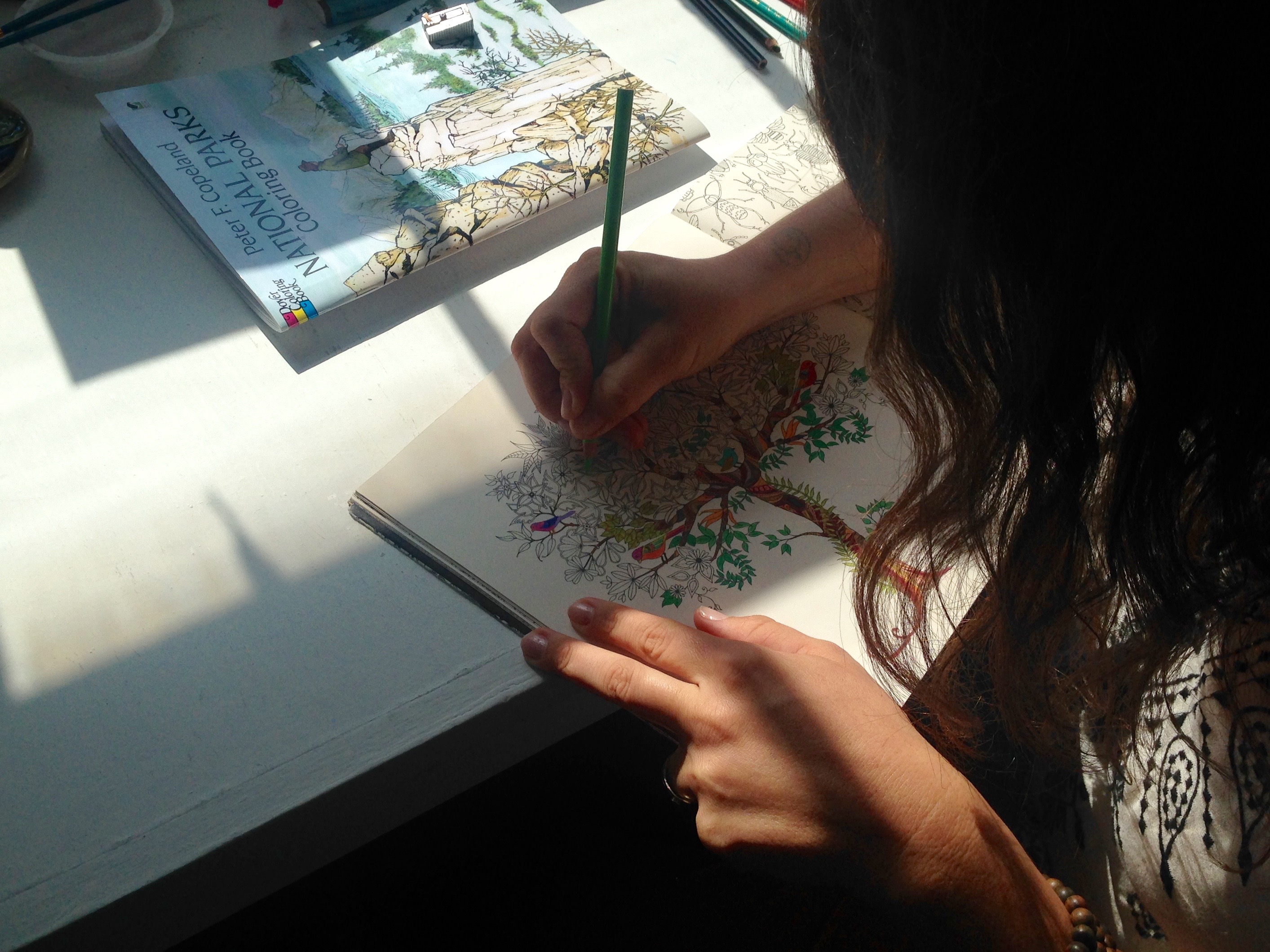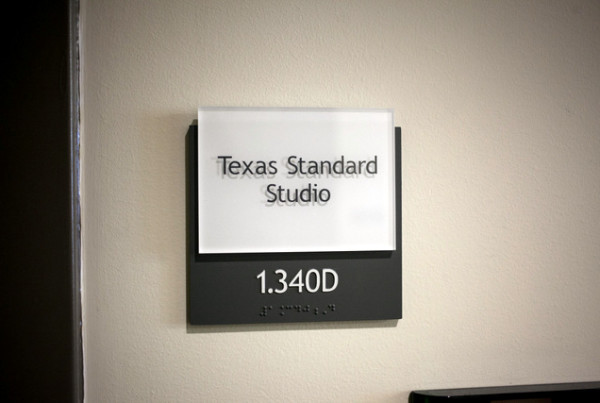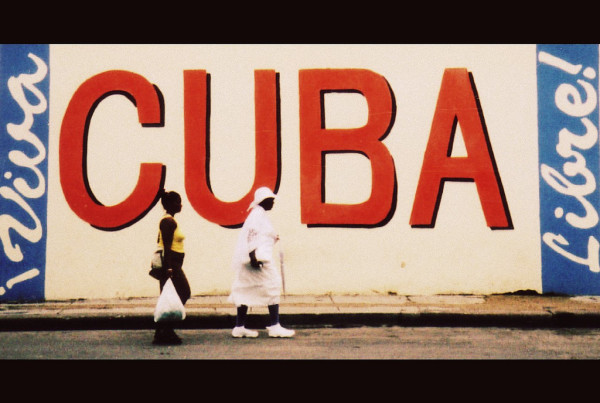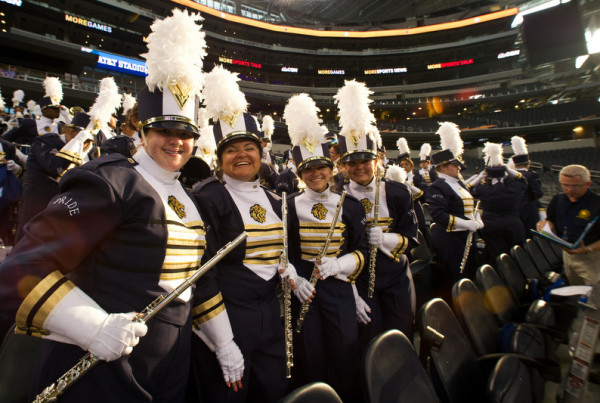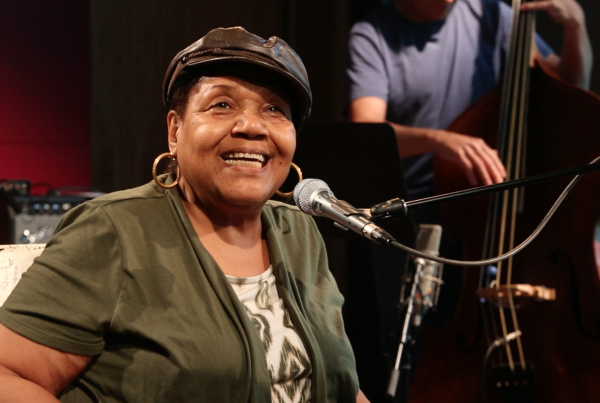By now, you’ve probably seen coloring books displayed in bookstores all over the country – they’re not just ordinary coloring books, but ones specifically designed for adults. Bookstores in Texas are no exception: Most local Barnes & Noble locations have a selection, as do local bookstores like the Twig Book Shop in San Antonio and BookPeople in Austin.
Sarah Jones, a licensed clinical social worker, has recently taken up adult coloring books after seeing them displayed in bookstores. She read an article a few months ago that claimed coloring is a great way to access the benefits of meditation and mindfulness.
“It does have the effect, for me at least, of calming my mind,” Jones says. “My guess being because you get so focused that the rest of your thoughts kind of fall away.”
The trend started with Johanna Basford’s book “Secret Garden: An Inky Treasure Hunt and Coloring Book.” Although it was published in 2013, the book – and its follow-up, “Enchanted Forest” – gained immense popularity in the last six months, selling millions of copies worldwide and becoming the two best-selling books on Amazon earlier this year.
“My sales rep, when he came in, was like, ‘You probably should take these,’” says Elizabeth Jones, head buyer and inventory operation supervisor at BookPeople. “And I was like, ‘I don’t know. I mean, it’s adult coloring books, those do okay for us but they don’t do great.’ And I was wrong.”
BookPeople created an adult coloring book section about two years ago, which consisted of a very small inventory. But it wasn’t until Basford’s book took off that the store saw a 900 percent increase in sales of adult coloring books. They even had to double their inventory, stocking books by other publishers eager to join the trend. But the claim of coloring books’ therapeutic benefits has caused a controversy among art therapists.
“Some of the companies that have produced some of the coloring books have titled them art therapy,” says Andrea Davis, board certified art therapist in Dallas. “And these books, while the propensity for harm may be minimal, they do confuse the public to think that maybe if they purchase that book, that that would be equal to having an art therapist.”
She says art therapists don’t hand out pre-printed images for patients to color. Rather, they use a blank canvas to let patients express themselves and have whatever is created come directly from them. Coloring in pre-determined drawings can be more restrictive. Davis says its likening to meditation is also a bit off.
“There’s a lot more to meditation than simply distracting the mind from the flood of thoughts that can come into it,” she says.
That’s not to say coloring does not have therapeutic potentials. Besides being a fun and creative way to pass the time, Davis says its rhythmic nature can be a self-soothing technique. But as always, it depends on the person’s unique needs.
“I think we’re in a period where we’re all looking for a way to escape technology for a little bit and kind of let our mind do something else and something more tactile,” Jordan says. “And who didn’t love to color when they were a kid, right?”
Basford’s third book is scheduled to release in October, and sales are expected to go up again. Whether it’s a fad, a creative outlet or a path to self-soothing, adult coloring books may end as most trends, pushed aside for the next big thing. For now, it may be too soon to tell.


